
 |
Recent Books by Forum Members |

 |
 |
|
|
|||||||
 |
|
|
Thread Tools | Display Modes |
|
#31
|
||||
|
||||
|
Thanks Iain and Brent. That's unexpected great news. My period of interest but obtained just as an example of an LS not expecting it might be that old. If there is a guide of how to date one of these hats could one of you let me know? I tried contacting a NZ Army museum some years ago but they gave no definative guidance. Regards, Paul.
|
|
#32
|
||||
|
||||
|
PAUL,
You have a very nice example of an English made WW1 felt hat,Lemonsqueezer style.I'm sure the envy of many NZ militaria collectors.Surviving examples are very rare,and are most sort after.The pugaree ,the stitching on the brim ,and the general quality (made from rabbit fur felt) are sure signs of a WW1 English made hat. Hopefully some one more qualified can add the subtle differences between WW1 and WW2 squeezers to add to this thread. cheers Iain |
|
#33
|
||||
|
||||
|
Quote:
I see Barry has recently written a piece on Militarianz ,stating that he has seen a photo of the NZFA wearing felt hats lemonsqueezer style,the photo was dated 1912.Possibly this is a basis for his findings. Iain |
|
#34
|
||||
|
||||
|
Quote:
Also in the link is a 1902 photo of Colonel Malone wearing a lemonsqueezer, which suggests the NZA were certainly not the first to adopt the Lemonsqueezer shape. However, the question I put to all - excluding boy scouts who wore the BP hat - “When was the lemonsqueezer first adopted uniformly as approved by the commanding officer.” The 1914 parade photo of the Ruahine Regiment that I have provided in the militarianz link, is so far the earliest evedence that has been produced showing the NZ lemonsqueezer being “uniformly” worn by the troops and their commanding officer. Contained within the Militaria forum was one of the finest databases of lemonsqueezers, unfortunately when the site shifted servers, many of the photos were lost, even so, and although they are spread over a number of different threads, the MilitariaNZ forum still has the most lemonsqueezers on the net. For those who are interested, the following link is a short piece on “New Zealands first khaki hats and uniforms.” http://militarianz.freeforums.org/ne...rms-t1347.html The following link was built around my research on NZ headwear worn during the Boer war. http://militarianz.freeforums.org/ne...ent-t1650.html Last edited by atillathenunns; 01-12-12 at 12:56 AM. |
|
#35
|
||||
|
||||
|
Lot of information on that site- I will try and make my way through it but there is mention of a code that has been broken regards identification, and with regards to shape mention is made of the dome. As someone now jumping in to this subject I have no built up understanding and if someone could give me an idiots guide to identification that would be great. Regards, Paul.
|
|
#36
|
||||
|
||||
|
(1) New Zealand Artillery regiment.This is a WW2 era lemonsqueezer with the distinctive blue /red/blue pugaree for artillery.The hat badge has N.Z. in top scroll and the latin ''Quo fas et gloria ducunt'' in bottom scroll(B Horrell collection)
(2) Unamed WW1, NZA soldier ,with the above hat badge ,flaming grenade collar badges and NZA buttons |
|
#37
|
||||
|
||||
|
Quote:
http://militarianz.freeforums.org/ne...hat-t2584.html The following photo (Dated 1st March 1910) shows the colour bearers of the “Boy Scout Companies” which took part in the “Great Cadet Review” held in Auckland. These Boy Scout Cadets are wearing the regulation (B.P) Boy Scout hat, which Barry refers to. 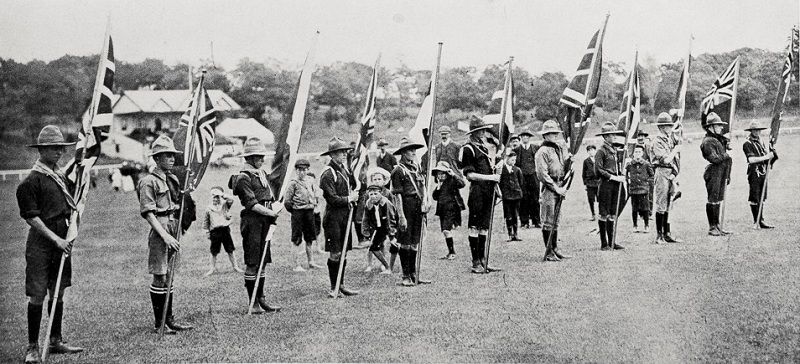
|
|
#38
|
||||
|
||||
|
As this thread contains a few examples of Pith (Foreign Service) helmets, I thought the following 3 pictures, all dated 2nd March 1910, showing members of the Auckland Field Artillery wearing helmets with insignia on the sides, might be of interest.
(The1st NZ contingent were the first to wear cloth insignia on the sides of their helmets during the Boer War) 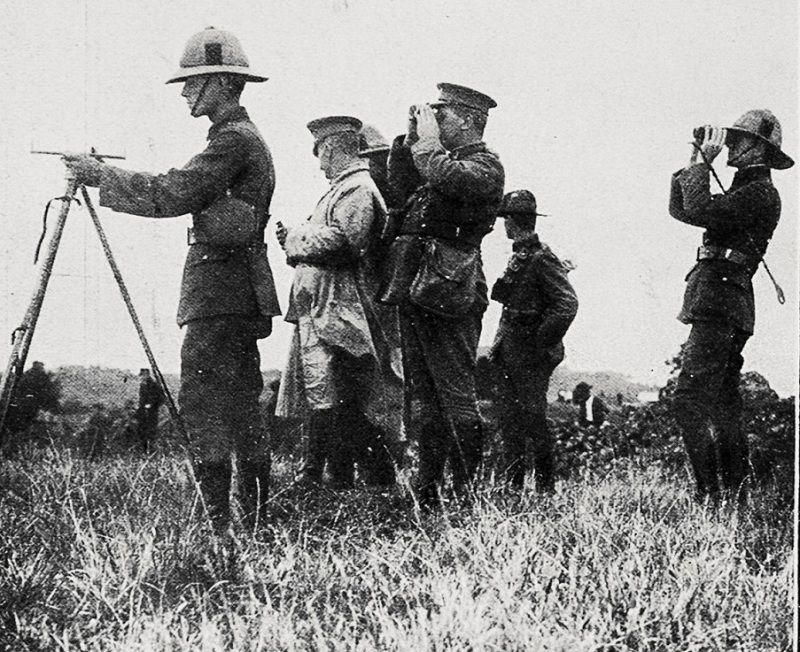 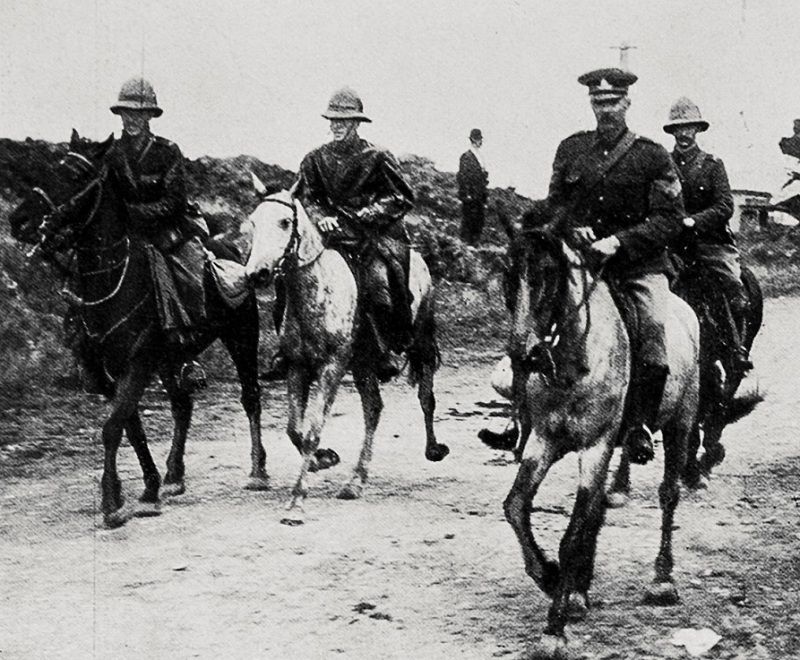 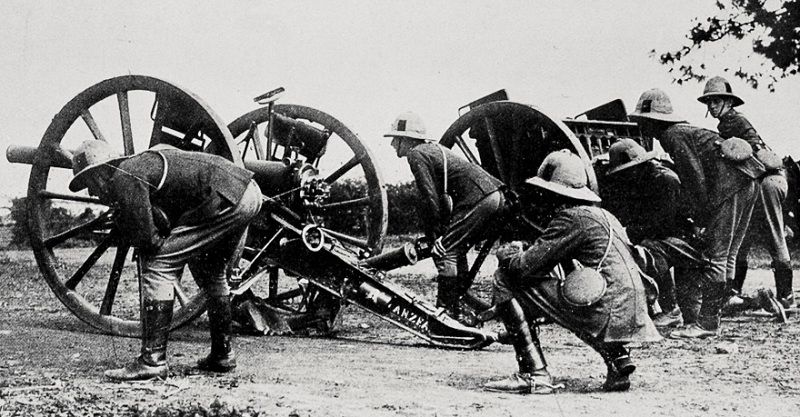
Last edited by atillathenunns; 07-12-12 at 06:10 AM. |
|
#39
|
||||
|
||||
|
Interesting photo's Brent.
I was looking at this 1915 dated Foriegn service helmet a few years back,with a hithero unknown blaze on the side.Most WW1 era NZ worn helmets that have cloth insignia ,the patch is made up of a strip of puggaree(i.e khaki/red/khaki for infantry). This one is a two colour blaze (red/khaki).The only other two colour blaze that has been recorded is the NZ Maori contingent's ,black and red patch It goes to show that there is still some unrecorded early NZ cloth insignia. It also had a curious inscription written in it AD.WA ?????!!!!!! Last edited by pukman; 07-12-12 at 02:38 AM. |
|
#40
|
||||
|
||||
|
Quote:
My reasoning is that if it is New Zealand, I would have found some form of record for it by now. The second is that the flash is in typical British regulation style: ie it is attached four folds from the top of the puggaree, while NZ flashes, including those worn by the NZ Maori contingent, attach from the top of the puggaree. |
|
#41
|
||||
|
||||
|
Quote:

|
|
#42
|
||||
|
||||
|
Quote:
A collector friend got this named tunic from the family of the veteran.The specialist and numeral badges were amongst the effects of the veteran,and fitted the lug holes perfectly.This is exactly how the tunic is pictured in the portrait picture of the soldier in question .100% provenanced.Perhaps this 1916 dated tunic(Trooper Weir embarked for Egypt on 31/5/1917 )is his original tunic as well as his coming home tunic. The khaki is faded ,meaning it has had exposure to strong sunshine.He came back to New Zealand in mid 1919. I think its fine just the way it is. Last edited by pukman; 07-12-12 at 05:36 PM. |
|
#43
|
||||
|
||||
|
Quote:
NZ Uniform reference book author, Barry O"Sullivan thought the patch to be a variation of an NZEF infantry patch.The patch itself has slipped from the top of the pugarree.An Australian gent mentioned that he had seen many variations of Australian patches that soldiers improvised with what was ever at hand.Malcolm Thomas was another insignia author I asked,who in turn asked a British army insignia authority.They couldn't find the patch recorded. Still ,the jury is still out on the origin of this one. Last edited by pukman; 07-12-12 at 05:40 PM. |
|
#44
|
||||
|
||||
|
Hmmm, regulation Scottish Glengarry? And Manawatu Mounted Rifles badge?
 http://www.trademe.co.nz/Browse/List...x?id=542641558 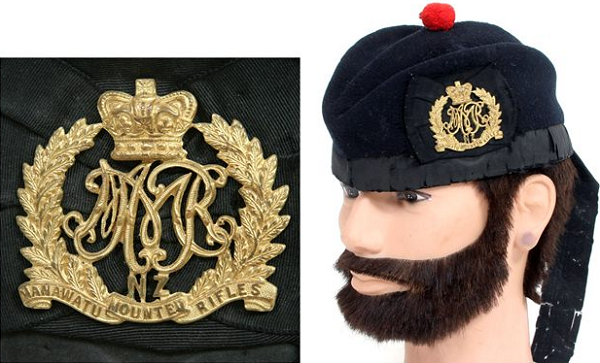 It could be possible that the vendor has made an honest mistake.  However, the way the auction is worded, I'm guessing the vendor knows the badge and hat are not a match. 
|
|
#45
|
||||
|
||||
|
$500 reserve for the Manawatu Mounted Rifles badge and Glengarry hat!
Geoff Oldhams 2011 price guide No. 2/76, page 15— gives the MMR badge a value of $450, which IMO is a little on the high side, certainly a top bid of $162 suggests the market is a little flat at the moment. Interestingly, the Manawatu Mounted Rifles bridle boss— price guide No. 2/78— has a value of $145. The interesting part is the MMR bridle boss pictured below on the right hand side, was the first badge that was used by the Manawatu Mounted Rifles, they adorned both sides of the bridle and another badge was worn on the horses breast-plate. As the New Zealand Military in those days were primarily British trained, NZ Regulations required NZ Mounted Volunteers to adopt equipment as used by the British. When the Manawatu Mounted Rifles were first formed in 1891, to obtain the latest regulation eqipment available at the time, 60 sets of bridles and brest-plates (Thats a total of 180 badges) and other equipment were purchased from D Mason and Sons in Birmingham, who were approved military suppliers. The bridle boss badges are typical in that the crown which sits on top of an oval belt (Garter), are the earlist known badge by Royal warrant (1751) to be worn on a British military cap.  Although no known Royal warrant exists prior to 1751, there is a tapestry at Blenheim Palace, which depicts the Battle of Blenheim (August 1704), and interestingly, shows Foot Guard Grenadiers wearing a large star badge on their caps. Unfortunately I have only seen small pictures of the tapestry, and their detail is not that great, but it is possible the star badge may also have a crown above it, and a garter in the middle of the star. 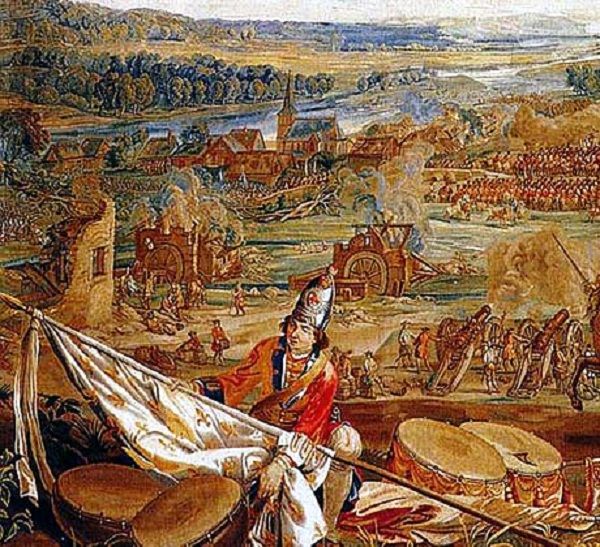 But I getting off track, the first uniform adopted by the Manawatu Mounted Rifles when they formed in 1891 was the regulation khaki uniform. Their hats were at the time, of the newly approved khaki pattern (described as mouse coloured soft felt), and they were similar to those worn by the Heretaunga Mounted Rifles, except the MMR wore a maroon colour puggaree. The hats were made by Wellington hat makers C. Hill and sons. (Apart from a brass hook ornament to hold the chin strap in place, no badge was worn on the MMR felt hat.) The first unit to adopt Khaki in New Zealand was the Heretaunga Mounted Rifles who paraded their new khaki uniforms in March 1891, during the Easter Encampment. The following is a description of that uniform.— “Jacket of the Hussar patters, the undress being a patrol jacket, breeches, soft felt hat looped up at the side with a brass ornament holding the hook. The officers wear gold Russian braiding on their velvet collar and cuffs, the non-commissioned officers, gold tracing braid on the collars and shoulder straps, with a crow's foot. The private’s tunics are the same with plain collar and cuffs, and brown leather waist belts. The leggings are of the mounted infantry pattern, and the spurs are the short neck Royal Artillery Drivers pattern. Captain Loveday who takes a great interest in his troop has adopted the plan of ordering from Home saddlery for the whole troop of a uniform character, and he has also a pattern forage cap coming out. The uniform is one taking at first, but I must confess that after a while it loses its attractiveness, though it is true that in the sham fight they were the hardest to pick up.” (The New Zealand Clothing Factory was given the first contract for the manufacture of the Khaki uniforms.) Again I have gone off track, In April 1900, the Manawatu Mounted Rifles were fitted with new khaki uniforms made by Mr T. T. Kerslake who at the time was one of Palmerstons leading tailors. As it was the time of the Boer war, the colour of the uniform was khaki and the hat was felt. However, it is possible that the MMR may have adopted a khaki side cap for drill order. In October 1906, the Manawatu Mounted Rifles were fitted with new regulation dark green uniforms that became popular with Mounted volunteers. The MMR dark green uniform with black facings were manufactured by Hallenstein Bros (N.Z. Clothing Factory) Unfortunately I have not found a discription of the hat worn by the MMR at this time. I however expect it was the regulation khaki slouch hat and the regulation Austrian pattern field service cap. And this is where we come full circle and the $100 question.— When did the Manawatu Mounted Rifles adopt the so called Glengarry badge? IMO, I can only speculate that the badge was adopted sometime after 1901. The following photo is of Harry Thomas Palmer, who was Quarter-Master Sergeant when he was elected as a Lieutenant in the Manawatu Mounted Rifles in 1906. Palmer is wearing a Volunteer officers uniform, which dates this photo between 1906 and 1910. 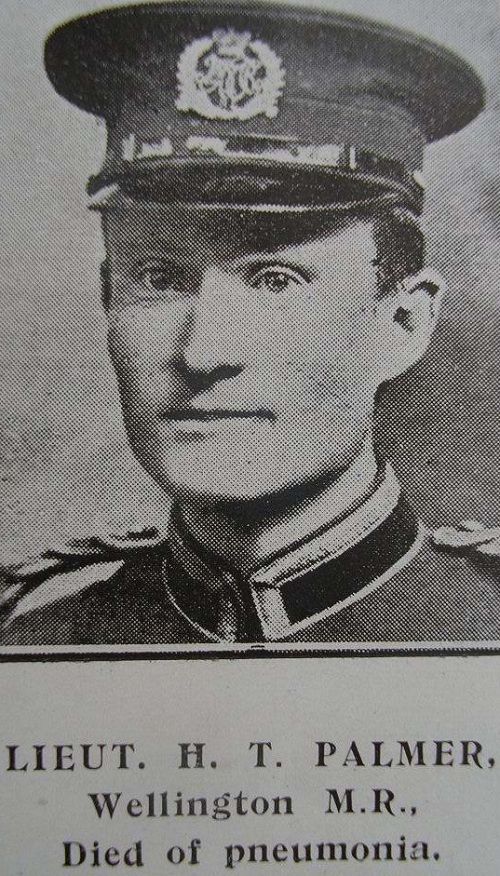
|
 |
|
|
 |